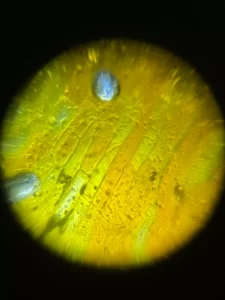Part I: Forensics and Chemistry
Day 2: CSI Challenge
6 Activities
Part II: Physics and Robotics
Part III: Engineering and the Environment
Day 1: Microscopy
Instructions (Part I): Carefully view the below videos to learn how to create and use your Foldscope. Feel free to skim through the videos if you are already comfortable using your Foldscope.
Instructions (Part II): Carefully view the below videos to learn how to use your Foldscope to view objects you find in your own surroundings. The below example involves viewing an ant!
Instructions (Part III): Use the information you have learned in the above videos to find and view your own sample from your environment. Living or non-living samples are welcome! Take a picture of your sample and share it below. Type your first name in the “Subject” area. A QR code is provided below for ease of upload.
Instructions (Part IV): Click here and carefully view the below to learn how to view onion cells using a microscope. Use a few drops of iodine to help visualize the different parts of the onion cells.
Instructions (Part V): Each student should gently scrape the inside of their cheek with a clean toothpick to avoid discomfort. Transfer the cells by stirring the toothpick in a drop of methylene blue placed in the center of a clean microscope slide. This stain will highlight the cells’ nuclei and other internal structures, making them easier to observe. Place a cover slip over the sample. Refer to the video below for additional instructions. Apply the techniques demonstrated in the video to your provided Foldscope materials.
Instructions (Part VI): Observe the structure of their cheek cells, noting the cell membrane (outside), cytoplasm (inside), and nucleus (dark portion in the middle that contains the DNA). See image below as a reference:



